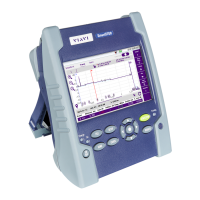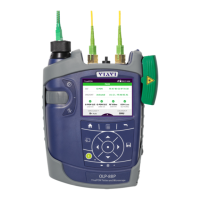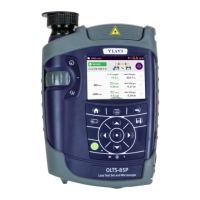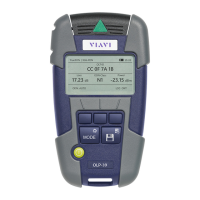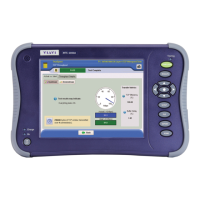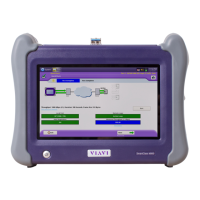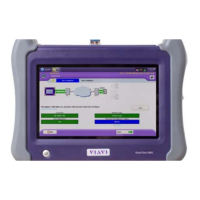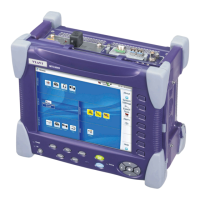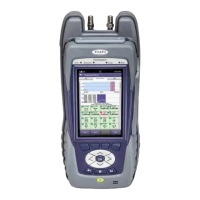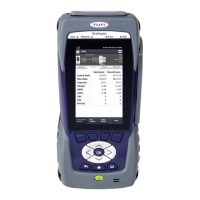How to fix error message during Ethernet upgrade on Viavi Test Equipment?
- MMatthew GoodAug 14, 2025
If you get an error message when upgrading your Viavi Test Equipment via Ethernet, check that the Server Name is correctly entered.
How to fix error message during Ethernet upgrade on Viavi Test Equipment?
If you get an error message when upgrading your Viavi Test Equipment via Ethernet, check that the Server Name is correctly entered.
What to do if I get an error message when upgrading Viavi Test Equipment via USB key?
If you receive an error message when upgrading your Viavi Test Equipment via USB key, verify that the USB key is correctly connected.
Why is my Viavi Test Equipment battery not charging?
If the Viavi Test Equipment battery refuses to charge, and the charge indicator remains off when connected to the mains, there might be several reasons. First, check if the instrument contains a battery. Second, the equipment's temperature might be too high, preventing charging for safety. Allow the equipment to cool down. Finally, the battery might need replacement.
What to do if my Viavi Test Equipment SmartOTDR suddenly switches off?
If you are using the Viavi Test Equipment SmartOTDR and it suddenly switches off, first check if the instrument is configured to automatically turn off. Also, check the battery charge level.
What to do if I get an error message when unlocking my Viavi Test Equipment?
If you encounter an error message when unlocking the Viavi Test Equipment, ensure that you are using the correct password.
Why nothing happens when I press the ON/OFF key on my Viavi Test Equipment?
If nothing happens when you press the ON/OFF key on your Viavi Test Equipment, ensure the battery is present and charged, or that the mains adapter is properly connected.
What to do if nothing happens on the screen of my Viavi Test Equipment?
If nothing happens on the screen of your Viavi Test Equipment, whatever action is performed, the platform must be rebooted.
What to do if nothing happens when I touch the screen on my Viavi Test Equipment?
If nothing happens when you touch the screen on your Viavi Test Equipment, perform an Autotune.
How to calibrate the touchscreen on Viavi Test Equipment?
To calibrate the touchscreen on your Viavi Test Equipment, perform the Autotune process by pressing the Settings icon to open the System Settings screen.
Outlines the guide's purpose in using SmartOTDR features and capabilities.
States the intended user base and assumed prior knowledge for the manual.
Provides contact information and resources for technical support.
Explains the naming conventions and symbols used throughout the guide.
Details safety precautions for using batteries and AC/DC power.
Provides guidelines for safe handling of optical connectors and connections.
Outlines safety procedures and standards for laser product usage.
Instructions for removing and checking the SmartOTDR and its accessories.
Highlights the key hardware and software features of the SmartOTDR.
Describes the function of front panel hard keys and status indicators.
Explains the power sources and related components for the SmartOTDR.
Guide to attaching the correct country-specific plug to the mains adapter.
Instructions on connecting the mains adapter and charging the device battery.
Procedure for powering the SmartOTDR unit on and off.
Guidance on positioning the instrument for optimal use on a work surface.
Steps for initial configuration of regional settings upon first startup.
How to navigate to and access the System Settings menu.
Configuration options for screen parameters like backlight and contrast.
Setting automatic shutdown timers and specifying battery types.
Details on connecting power meters and Visual Fault Locators (VFL).
Instructions for activating and configuring the power meter function via USB.
Explanation of the Visual Fault Locator (VFL) function and its connector.
Procedures for saving and loading measurement results.
Overview of the scope function for inspecting optical connectors.
Guidance on installing inspection tips for the scope.
Steps for configuring the scope, including connection and analysis settings.
Procedure for starting and using the scope function.
How to perform tests on fiber connectors and end-faces using the scope.
Options for saving test results and managing files related to scope.
Methods for connecting the SmartOTDR via Bluetooth, Wi-Fi, and Ethernet.
Enables remote access and control of the SmartOTDR via PC or smartphone.
Information on synchronizing the SmartOTDR with the Stratasync cloud platform.
Introduction to the File Explorer interface for managing files.
How to select directories and files within the File Explorer.
Operations for copying, cutting, pasting, and renaming files/directories.
Creating directories, opening files, and sorting file lists.
Procedure for capturing and saving screen content as a PDF file.
How to combine multiple PDF or TXT files into a single PDF document.
Details on internal and external storage options like USB memory sticks.
Details on display, memory, I/O, battery, and environmental specifications.
Technical specifications for the standard source and optional power meter.
Specifications for optional features like VFL, Bluetooth, and Wi-Fi.
Detailed specifications related to OTDR optical interfaces and measurements.
Lists model numbers and configurations for the SmartOTDR units.
Catalog numbers for various accessories like scopes, cases, and adapters.
List of available firmware applications and their corresponding references.
Guidelines for maintaining the instrument, including cleaning and access.
Guidance on interpreting alarms and resolving common operational issues.
Information and recommendations regarding the environmentally sound disposal of the product.
Details on product warranties, limitations, and disclaimers from Viavi.
Outlines the guide's purpose in using SmartOTDR features and capabilities.
States the intended user base and assumed prior knowledge for the manual.
Provides contact information and resources for technical support.
Explains the naming conventions and symbols used throughout the guide.
Details safety precautions for using batteries and AC/DC power.
Provides guidelines for safe handling of optical connectors and connections.
Outlines safety procedures and standards for laser product usage.
Instructions for removing and checking the SmartOTDR and its accessories.
Highlights the key hardware and software features of the SmartOTDR.
Describes the function of front panel hard keys and status indicators.
Explains the power sources and related components for the SmartOTDR.
Guide to attaching the correct country-specific plug to the mains adapter.
Instructions on connecting the mains adapter and charging the device battery.
Procedure for powering the SmartOTDR unit on and off.
Guidance on positioning the instrument for optimal use on a work surface.
Steps for initial configuration of regional settings upon first startup.
How to navigate to and access the System Settings menu.
Configuration options for screen parameters like backlight and contrast.
Setting automatic shutdown timers and specifying battery types.
Details on connecting power meters and Visual Fault Locators (VFL).
Instructions for activating and configuring the power meter function via USB.
Explanation of the Visual Fault Locator (VFL) function and its connector.
Procedures for saving and loading measurement results.
Overview of the scope function for inspecting optical connectors.
Guidance on installing inspection tips for the scope.
Steps for configuring the scope, including connection and analysis settings.
Procedure for starting and using the scope function.
How to perform tests on fiber connectors and end-faces using the scope.
Options for saving test results and managing files related to scope.
Methods for connecting the SmartOTDR via Bluetooth, Wi-Fi, and Ethernet.
Enables remote access and control of the SmartOTDR via PC or smartphone.
Information on synchronizing the SmartOTDR with the Stratasync cloud platform.
Introduction to the File Explorer interface for managing files.
How to select directories and files within the File Explorer.
Operations for copying, cutting, pasting, and renaming files/directories.
Creating directories, opening files, and sorting file lists.
Procedure for capturing and saving screen content as a PDF file.
How to combine multiple PDF or TXT files into a single PDF document.
Details on internal and external storage options like USB memory sticks.
Details on display, memory, I/O, battery, and environmental specifications.
Technical specifications for the standard source and optional power meter.
Specifications for optional features like VFL, Bluetooth, and Wi-Fi.
Detailed specifications related to OTDR optical interfaces and measurements.
Lists model numbers and configurations for the SmartOTDR units.
Catalog numbers for various accessories like scopes, cases, and adapters.
List of available firmware applications and their corresponding references.
Guidelines for maintaining the instrument, including cleaning and access.
Guidance on interpreting alarms and resolving common operational issues.
Information and recommendations regarding the environmentally sound disposal of the product.
Details on product warranties, limitations, and disclaimers from Viavi.
| Event Dead Zone | 0.8 m |
|---|---|
| Pulse Width | 3 ns to 20 μs |
| Loss Threshold | 0.01 dB |
| Loss Resolution | 0.001 dB |
| Operating Temperature | -10°C to +50°C |
| Storage Temperature | -20°C to +60°C |
| Interfaces | USB, Ethernet |
| Wavelengths | 1310 nm, 1550 nm, 1625 nm, 1650 nm |
| Measurement Time | 5 s to 1800 s |
